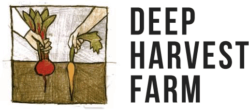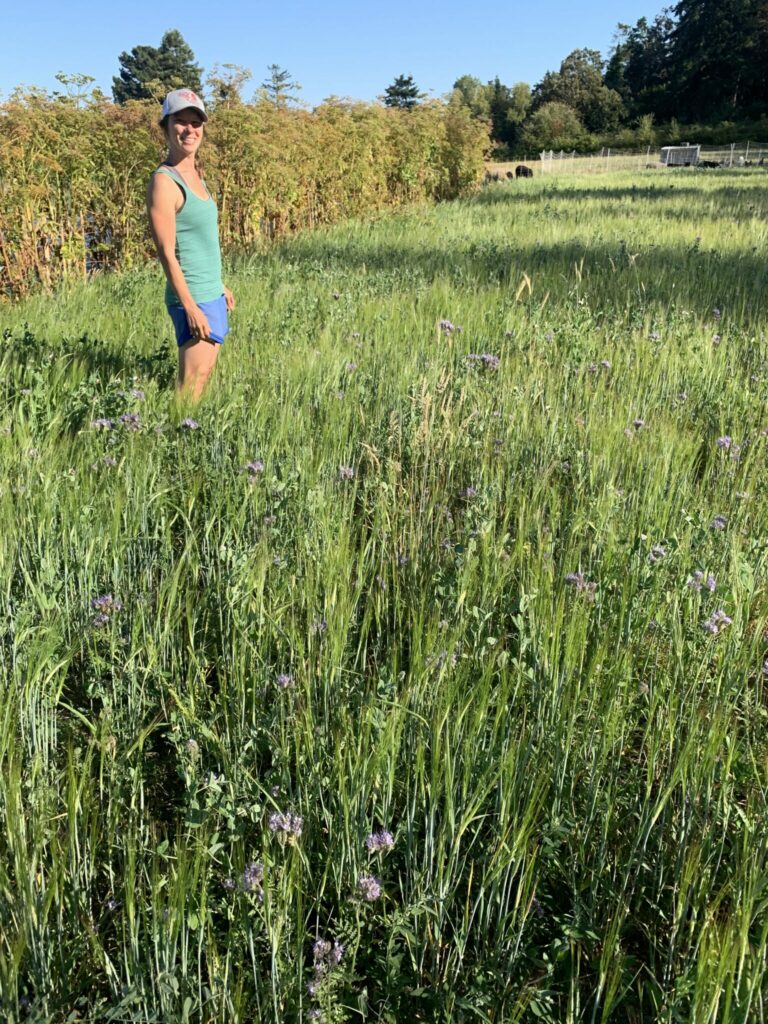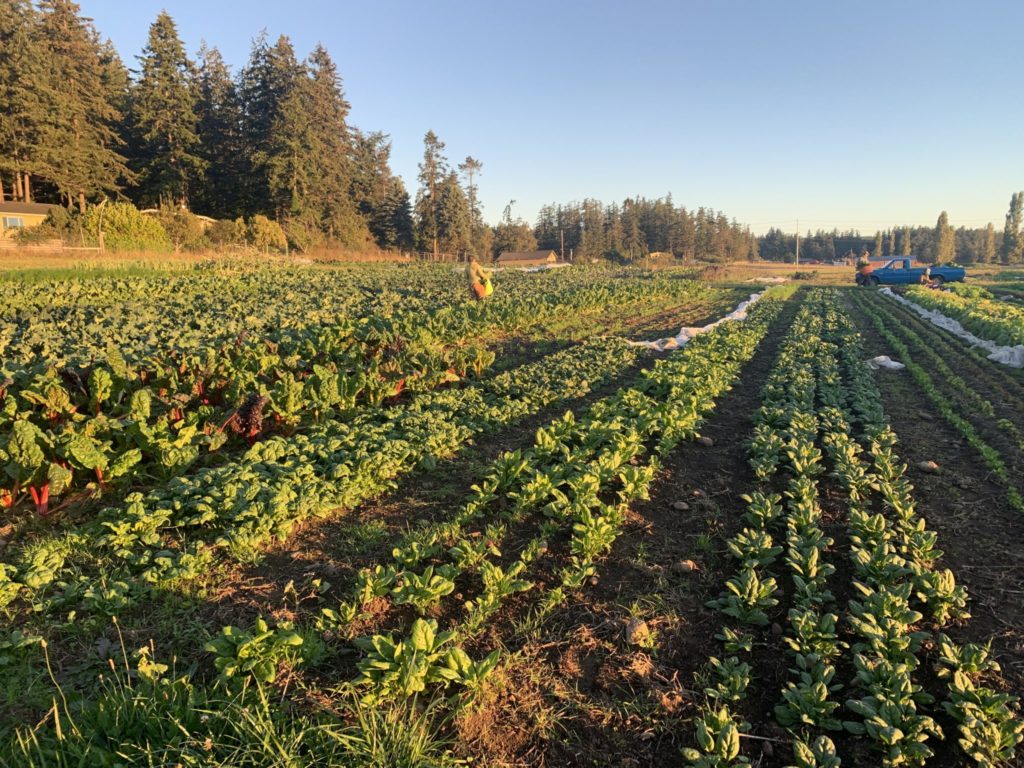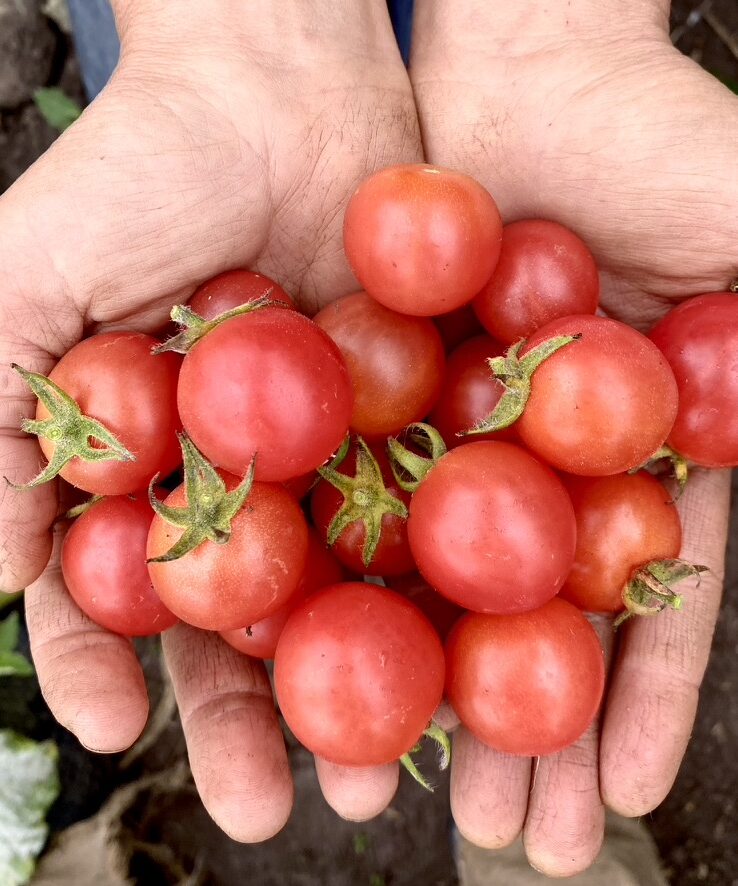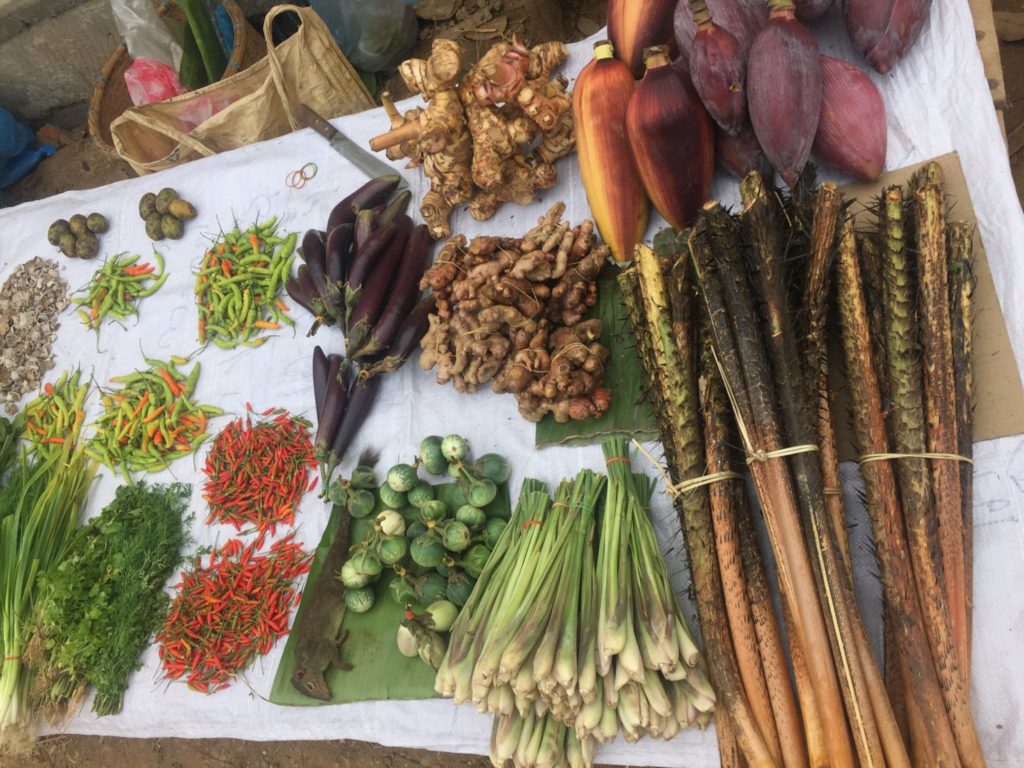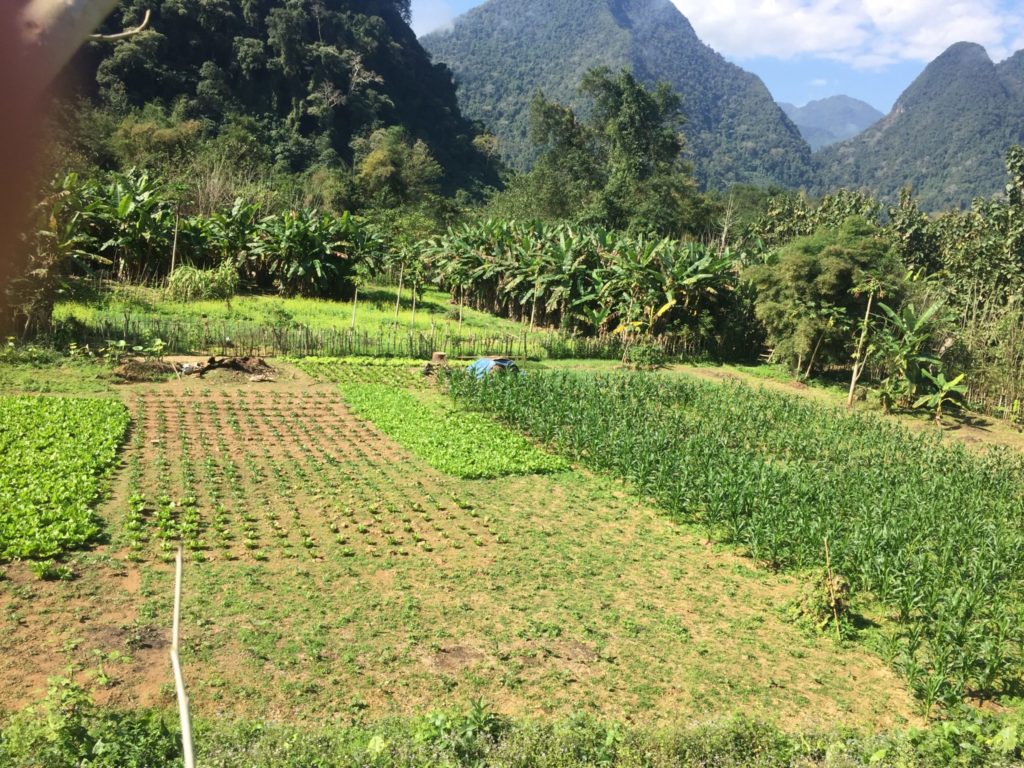The quest to reduce tillage, reduce inputs and ultimately, reduce work, continues….
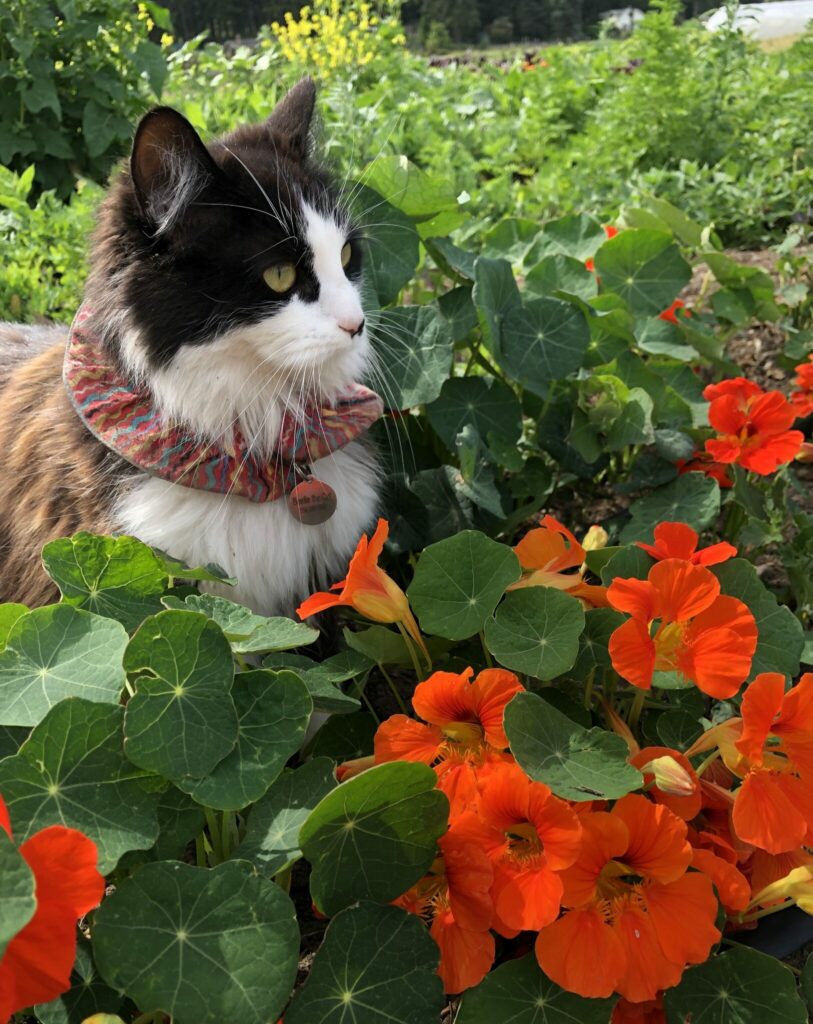
Our soil management regime currently centers around planting annual cover crops in the fall. Usually this is a mix of a legumes and grasses which grow a bit in late Sept/Oct., rest through the cold, dark of winter and surge into growth in spring. They often reach 6 feet tall by May when they flower and become fibrous/carbonaceous.
Working material back into the soil so we can run a seeder through the dirt again is a big process. This entails grazing sheep, flail mowing, tilling, chisel plowing, perhaps tarping, tilling again, maybe raking or some combination. At minimum it’s a 6 week process that requires no less that 4 passes with the tractor per bed. It’s a ton of labor, fuel, and tractor wear and tear, but the worst is the amount of soil damage incurred in the process.
It’s a constant dance of building and destroying soil health, just to maintain status quo. I’m always scheming about how to streamline this process, or otherwise change it up without sacrificing the benefits gained from the cover crops (which are vast). One option is buying compost to maintain organic matter instead of growing cover crops, which doesn’t require mowing and tilling to incorporate. Unfortunately, compost is incredibly expensive to buy and labor intensive to spread. It also doesn’t capture carbon, prevent erosion, maintain soil biology (the rhizosphere of cover crops keeps the soil ecosystem happy through the winter) or suppress weed growth like cover crops do.
One interesting soil management strategy we’ll test next season is the use of live pathways. First we’ll seed a field of, say, red clover in the fall and let it grow until the following spring. Then, we’ll mow the field and strip-till 4-ft wide beds every 7 feet, leaving permanent 3 ft-wide clover pathways between the beds. This field layout could theoretically last for years and hopefully won’t require planting and tilling of cover crop every season. The 4 ft beds will be fertilized, planted, and weeded like normal and then mowed after the crop is harvested. We’ll manage pathways with a 3 ft riding lawnmower which will shoot clover clippings out the side into the bed as a nitrogen-rich mulch. The following spring the bed will hopefully be re-established with a single pass with the rototiller.
Granted, I can foresee a millions ways things could go awry, but hey, it sounds cool on paper. We’ll try to keep you posted on results!
